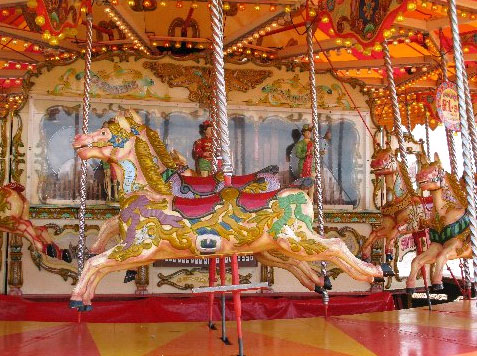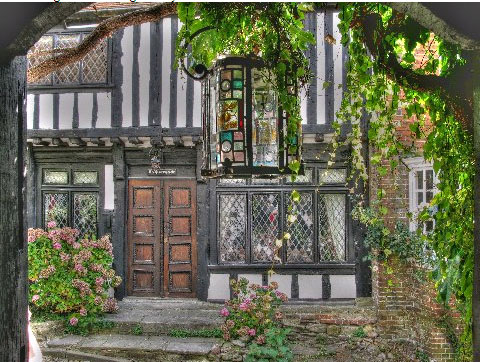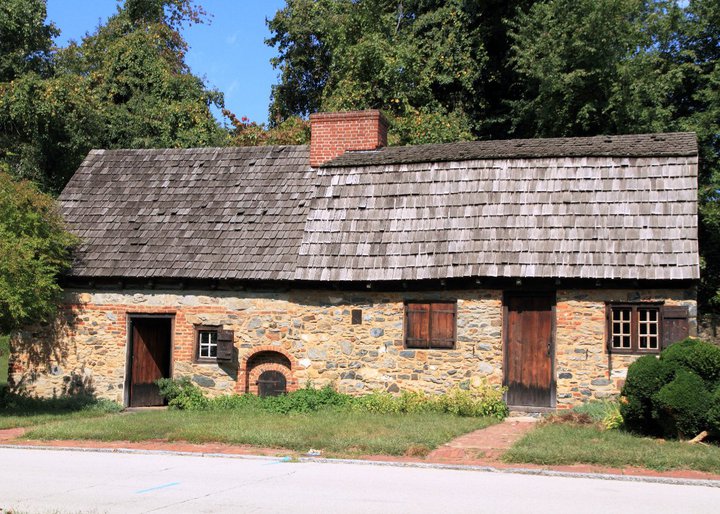Please join the Mojito Literary Society in welcoming Amy Corwin, multi-published author of historical and contemporary novels, as she tells us about her latest work, VAMPIRE PROTECTOR, with occasion digressions into apex predators, writing disasters, and
Mimus polyglottos.
1. Tell us a little about VAMPIRE PROTECTOR.
Vampire Protector is the first in what I hope will be a series of contemporary paranormal novels set around Virginia and Maryland, near where I grew up. Like many of my books, it deals with themes of redemption and self-realization. The heroine, Gwen, has been through two harrowing, life-changing experiences that have left her with fragmented, partial memories, and she soon finds that the holes in her memory may prove deadly.
Her neighbor, John Wright, is a vampire, and what Gwen doesn’t realize is that he has been protecting her family—and a deadly family secret—for centuries. Over the years, his own dreams, ambition, and desire to find love have been subsumed by his obligation to serve Gwen’s family. All he has left is duty, and after he meets Gwen, he finds his life even more hollow. Duty is a poor substitute for love. But as a vampire, he has nothing to offer her except endless, empty years which are not the kind of fulfilling life and family she craves.
Their personal tragedy only grow more intense when they face the challenges of deadly forces trying to discover Gwen’s secret and the physical danger of her old family home which may be haunted…
2 Your previous books include Regency romances and mysteries, both contemporary and historical — what made you decide to write a contemporary paranormal?
Vampire Protector is very special to me. It’s both my first contemporary novel and first paranormal, and it was one of those novels I felt driven to write. After going through the death of my parents, a new—and first--marriage, and other life changes, I found myself needing to write about the longings we all experience to recapture the past and find meaning in our lives.
Although Gwen, the heroine of Vampire Protector, faces unique circumstances that none of us has ever faced, she also faces issues with which we are all, sadly, familiar. She must come to terms with the loss of her family and move forward. It is definitely fiction, but the themes and issues are ones that all of us work through. Some of the scenes where Gwen remembers her family were very difficult to write because of the memories they evoked about my own childhood and the loss of my parents. I don’t believe you ever stop longing for those special, fleeting moments of shared love, even if those times were just mundane activities like baking a pie with your mother.
Fortunately, there’s more to Vampire Protector than my maudlin longing for the early sixties. Most of my readers know I also write historicals and my love of history shows up again in this book, in what I hope is an unexpected turn of events. I won’t spill the beans, but suffice to say, vampires are long-lived creatures and those in my novel have some interesting intersections with our own early American history.
3. You mention that you are a former biology student (which explains why you can offer such a useful timeline on both corpse decomposition and Regency rose-growing). How else does your former scholarly interest affect your writing?
Having a “scientific bent” has been both an advantage and a curse. The advantage is that I know how to do research and have personal interests which help ground the books I write in the reality of our physical world. Some odd kink forces me to know how every bird, animal, and plant would look, respond to stimuli, and interact. I’ve found that this has helped me enormously in building fictional worlds because one of the most important aspects of biology is the understanding of ecosystems and the interdependencies within communities of living organisms.
And while much of that sounds like mumbo-jumbo, what it does provide is a holistic foundation for developing paranormal worlds where history, the paranormal, and fictional elements work together as a logical system of interdependent elements.
For example, how would vampires, as a super predator, realistically interact with their prey, humans? I find that question fascinating.
Science can help me frame fictional answers such questions and create realistic behaviors for the characters.
The curse, of course, is the deep need I feel to explain everything. I often find myself having to stop and remove passages where I wax poetic with scientific explanations or boring—but factual—descriptions of minor things like birds. Does anyone really care about the life history, songs, and Latin name of the Northern Mockingbird, Mimus polyglottos?
On an amusing side-note: there is a debate, even among ornithologists, about whether common bird names ought to be capitalized or not. I stand firmly in the camp that states since these are proper names, they ought to be capitalized. I’ve almost come to fist-a-cuffs with editors who wanted the names in lower case.
But if you use lower case, then you don’t know if a green heron is the proper name of a specific bird, the Green Heron, Butorides virescens, or just a generalized description of a heron that happens to be green. Lower case is a description, not a name.
Sorry, I digress. But you can definitely see where a background in biology can be a downright curse at times. You never want to get into fights with your editor.
4. Your website includes a section on Bloopers, Out-takes, and Writing Disasters. What made you decide to share some of your — as you describe it — unforgivably bad writing?
Glad you asked because it gives me an opportunity to explain.
No one is perfect. Certainly, no manuscript is perfect. And even after publication, you can find errors in your book that dismay and disgust you. All of us, including our wonderful editors and copy editors, are human. Even computers, which are not human, make mistakes during grammar and spell checks.
So…I’ve always found it more useful to admit mistakes right up front. It’s the only way you learn and move forward. After having a few embarrassing errors show up in published books, I decided, well, I might as well just admit them as we discover them. I hoped to make a game out of it, since I love to hear from readers, even if it’s only an e-mail cataloging mistakes my editor, copy editor, and I missed. By listing a few on my website, we can keep track of mistakes already found, so sharp-eyed readers can send me e-mails about new, hitherto undiscovered mistakes. LOL
There is also the odd notion, expressed to me by several readers and authors-to-be, that you do a draft or two of a manuscript and it’s perfect. (And of course you can write a book in one month, just writing an hour or two during the evening while scarfing down bon-bons and drinking gallons of Scotch, right? ) By exposing a few sections of my own shameful early drafts, I hoped to show how much work goes into transforming a manuscript into something acceptable as a book.
Finally, I thought it might be fun to post pieces of novels that got cut out in the final form. Sort of the like the outtakes you sometimes see at the end of movies. I love them in movies. They are frequently hysterically funny. So I thought a few “outtakes” of my own might amuse readers and intrigue them enough to want to read the “real” story that hopefully isn’t quite so bad.
5. Your website also features articles from the broadsides, what you describe as the Regency’s version of tabloids. What do you find so fascinating about these sensationalistic accounts of horrid apparitions and murdering publicans?
I admit it, I’m a sucker for ghost stories and murder mysteries. The two often go hand-in-hand. In college, I actually wrote a paper on the rise of the Gothic novel with its elements of murder and the supernatural.
In addition, one of the major influences on both my writing and reading habits was Barbara Michaels. She wrote a brilliant combination of paranormal, mystery, and romance. In many of her stories, history plays a major role in the genesis and resolution of the mystery.
My love of history forced me to start writing in the historical genre, specifically historical romantic mysteries, but I always wanted to include that paranormal element. So I was on the lookout for murder mysteries, ghost stories and actual, historical accounts of paranormal events. I wanted facts to lend more realism to my stories.
Then I found actual accounts from the early 19th century of experiences with the paranormal and murder. The accounts concerning the investigation of murders during that period helped me tremendously to ensure I got the sequencing of events correct when I had a mystery subplot in my historical romances.
Finally, because many of my stories have a very comedic tone, I wanted to make sure that I got the actual period details correct, particularly when it came to investigating murders. I didn’t want my stories to move from the humorous into the territory of the completely ridiculous. I needed to have some foundation in reality.
Of course, all of that can’t hide the fact that I just found the broadsheets incredibly fascinating. Sort of like the “Forensic Files” of the Regency period.
6. Do you have a current work-in-progress?
Yes! I have three!
I’ve got a contemporary paranormal about a minor character in Vampire Protector, a woman named Quicksilver. She’s literally gone through hell at the hands of vampires and wants nothing more than to kill them all. But she meets a man who is determined to save the souls of vampires and give them a second chance. The sparks fly as they try to meet on some small bit of common ground. The working name of this manuscript is Quicksilver, and I hope to finish editing it and start submitting it by January 2011 to my publisher, The Wild Rose Press.
Right now, I’m writing a contemporary cozy mystery called It’s a Crime about a woman who is an exhibition shooter and who gets dragged into a complex series of murders, set in the Outer Banks of North Carolina.
Finally, I’m editing a historical romantic mystery. The working name is Deadliest Rose. This book draws on my research into the history of roses to create a story where the murderer sends a rose to a detective agency, to indicate who the next victim will be. If they can identify the rose, they have a chance at saving the victim. The first draft is done, and I’m hoping to finish edits later this summer to prepare it for submission late in 2011.
7. Any other exciting news you'd like to share?
I’m awaiting word on a contemporary, cozy mystery set in the Outer Banks of North Carolina, tentatively called Whacked. I should hear by the end of November. Keep your fingers crossed.
In addition, I have one more historical romantic mystery, The Necklace, due out very, very soon. I hope by the end of November or December. For those following my other historicals, this book features the incorrigible Archer family. Oriana Archer manages to find an Archer family heirloom—an emerald necklace—only to lose it and have it reappear, clutched in a dead man’s hand.
I can’t wait to have it released!
That’s it for now, and I hope readers will find something of interest. Don’t forget to visit me at http://www.amycorwin.com for the latest news.
Thank you so much for having me on your blog!
Amy Corwin
********************
Amy Corwin is a charter member of the Romance Writers of America and has been writing for the last ten years in addition to managing a career as an enterprise systems administrator in the computer industry. She writes Regencies/historicals, mysteries, and contemporary paranormals. To be truthful, most of her books include a bit of murder and mayhem since she discovered that killing off at least one character is a highly effective way to make the remaining ones toe the plot line.
Amy's first paranormal, VAMPIRE PROTECTOR, debuted in November, 2010.Amy’s first Regency, SMUGGLED ROSE, received a 4-star review by “The Romantic Times” and her second Regency, I BID ONE AMERICAN, received a perfect score of 5 from Long and Short Reviews. Her third Regency, THE BRICKLAYER’S HELPER, is out now from The Wild Rose Press.
Website:
http://www.amycorwin.com
Twitter:
http://twitter.com/amycorwin
Facebook:
http://www.facebook.com/AmyCorwinAuthor
Blog:
http://amycorwin.blogspot.com


































